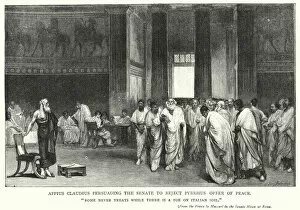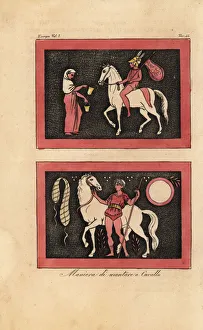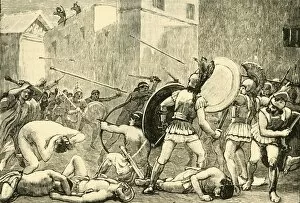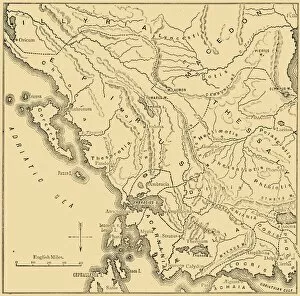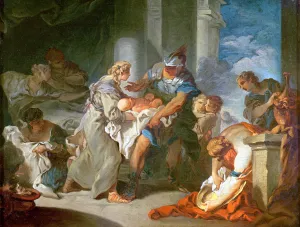Pyrrhus Collection
Pyrrhus, the renowned Greek general and statesman, is immortalized in history through various captivating depictions
All Professionally Made to Order for Quick Shipping
Pyrrhus, the renowned Greek general and statesman, is immortalized in history through various captivating depictions. In one scene, Pyrrhus valiantly fights against the Romans at Beneventum, displaying his strategic brilliance and fearless demeanor on the battlefield. Another engraving portrays Appius Claudius Persuading the Senate to Reject Pyrrhus' Offer of Peace, highlighting his diplomatic skills that were often overshadowed by his military prowess. Militiades, Themistocles, and Pyrrhus I stand together in a powerful image symbolizing their shared commitment to defending Greece against external threats. The ancient Greek method of riding a horse bareback showcases Pyrrhus' agility and adaptability as a leader who could navigate any terrain with ease. A majestic statue stands tall as a testament to his enduring legacy as King of Epirus. His regal presence captured in stone reflects both his noble lineage and commanding presence on the world stage. Intriguingly, an illustration featuring Javan lutung monkeys (Trachypithecus auratus) suggests an association between these creatures and Pyrrhus himself - perhaps hinting at some deeper symbolism or connection yet to be unraveled. The Triumph of Commander Manius Curius Dentatus further emphasizes Pyrrhus' significance within historical narratives. This grand spectacle celebrates Dentatus' victory over him while also acknowledging the indomitable spirit that defined both leaders during their time. An enchanting pen-and-ink drawing depicts Infant Pyrrhus before Glaucias - an intimate moment frozen in time that reveals glimpses into his early life and upbringing under Glaucias' guidance. Lastly, "The Rape of Polyxena" engraving by Professor Pio Fedi evokes strong emotions surrounding love and tragedy intertwined with Pyrrhic undertones - reminding us that even great conquerors like him were not immune to the complexities of human relationships.











